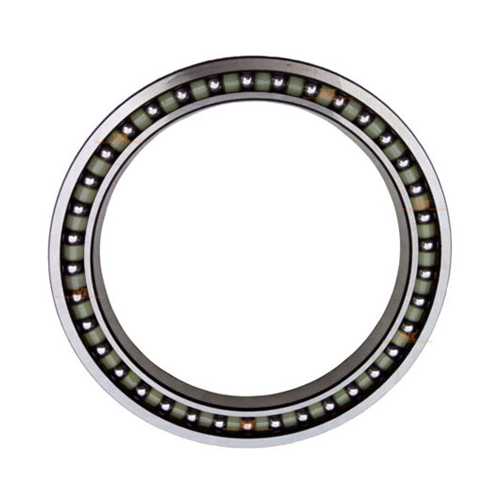
Excavator bearings include: excavator travel bearings, excavator slewing bearings, excavator needle bearings, excavator gearbox bearings, excavator travel motor bearings, excavator travel drive bearings, excavator joint bearings, excavator slewing bearings and Inch non-standard bearings used on excavators.
Introduction
The method of installation and disassembly of the excavator bearing shall be based on the structure and size of the excavator bearing and the mating nature of the excavator bearing components. The pressure of installation and disassembly should be directly added to the end face of the tightly matched excavator bearing ring. The pressure can not be transmitted through the excavator bearing rolling element, because it will cause indentation on the working surface of the excavator bearing and affect the normal operation of the excavator bearing. It can even damage the excavator bearings. Parts such as cages, seals, and dust caps of excavator bearings are easily deformed, and the pressure to install or remove the excavator bearings cannot be added to these parts.
Excavator bearing installation:
(1) Improper adjustment of the shifting device. If the transmission of the excavator adopts the mechanical manual shifting mode, if the shifting lever, the longitudinal shaft, the horizontal shaft and the vertical fixing screw are loose, the transmission may be "jumped". Variable speed drive wear
(2) Abrupt change of external load Due to the working nature of the excavator and the design of the machine itself, sudden changes in the external load will also cause the transmission to "jump". When the road surface is uneven, the excavator is going downhill or the driving route is improper, and the external load suddenly changes, the sudden change of the load will act on the gear meshing gear of the transmission through the wheel and the transmission shaft, so that the gear meshes. The gear is disengaged due to axial thrust, causing the transmission to "jump". Self-locking mechanism performance degradation
(3) The transmission mechanism of the shifting device of the excavator relies on the sliding toothed sleeve to move axially on the fixed toothed sleeve and engage with the driven gear of each gear to realize the shifting. In the frequent shifting process, the end faces of the gear teeth of the above-mentioned meshing gears are easily ground into a taper, causing the meshing performance to be lowered to cause a "jump".
(4) In order to prevent the transmission from "jumping", the excavator is self-locking in the cover hole of the II, III and IV, V shift fork shafts of the transmission and in the I and reverse shift forks. Steel balls and springs. When the spring that is positioned and self-locking is weakened or broken, the self-locking performance of the self-locking mechanism will decrease until it disappears, causing the transmission to "jump". At the same time, if the groove on the positioning steel ball or the fork shaft wears, it can also cause the transmission to "jump".
(5) Improper operation method When the excavator is driving on a slope (especially when driving downhill), if it is not operated properly, it will also cause the transmission to "jump".

